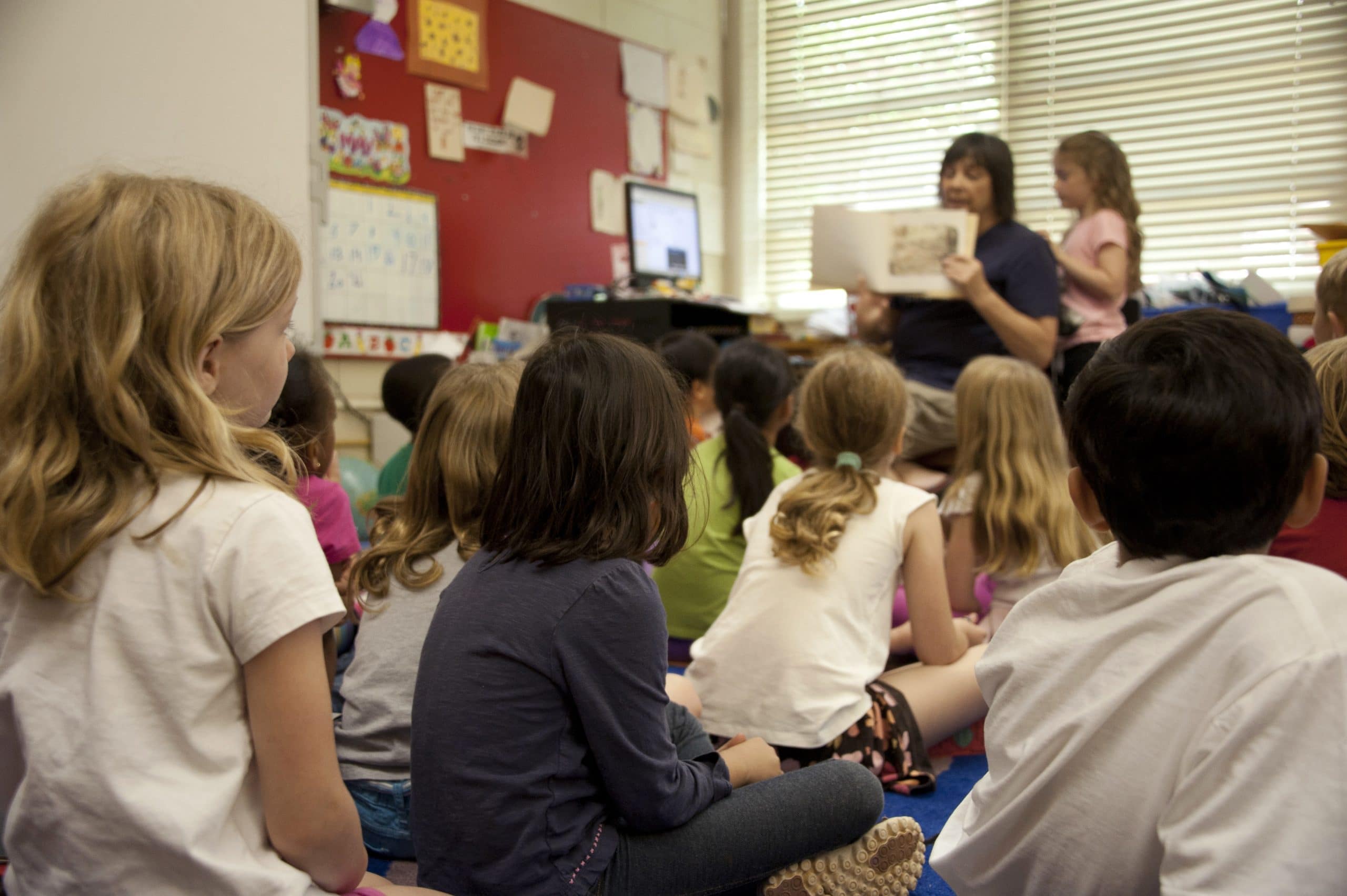
30 Aug Trauma-Informed Teaching Strategies for Remote & In-Person Learning
Helping students affected by trauma isn’t straightforward. The way trauma manifests itself can vary more than the types of traumas that exist, and this can feel overwhelming. More than two thirds of children have reported at least one traumatic event before the age of 16. And this is pre-pandemic. COVID-19 has not only created new trauma for families but potentially exacerbated the ones already present. As educators, what can we do? How can we maintain a level of support necessary during in-person and remote learning? We’ve put together a list of trauma informed teaching strategies to better equip your classroom.
First things first
Strengthen students’ sense of safety
Children can’t retain information if they don’t feel safe or protected.
If they believe any kind of danger is ahead, even if it’s something that doesn’t appear to be a big deal, it can be highly triggering to the student’s sense of safety.
During the pandemic, it’s safe to say that everyone’s sense of safety is a bit off. These trauma informed teaching strategies are all helpful ways to reinforce a safe and connected environment where you and your students can thrive.
Trauma Informed Teaching Strategies
Building a trauma informed classroom
Building a trauma informed classroom doesn’t involve some kind of checklist, there aren’t any concrete steps to follow per se.
It’s a mindset change.
One that demands rigorous compassion with a shared understanding that all children do better when the focus is on their social and emotional wellbeing over their test scores.
Fortunately, the majority of teachers today are well aware of this and are already creating safe and encouraging environments for their students.
We love Edutopia’s trauma informed practices that they implement in their classrooms.
But still, there are a number of different techniques and strategies to help strengthen these environments, especially when it comes to remote learning.
Below are some reminders, and tips and techniques that will strengthen any classroom whether in-person or online.
1. Keep it consistent by being predictable
In a given day, the only consistency a child experiences may very well be your classroom. You may not know this for sure, but for their wellbeing and for yours, it’s best to assume that…especially in a pandemic.
For children who experience trauma or have experienced trauma, it is vital that their educational environment is a place where they feel they have control—predictability and consistency on your part, are essential for this.
One way to do this—show them the agenda at the start of every class. Give them a visual of what to expect and when to expect it for that day. Anxiety seems inextricably bound to trauma. And the amount of anxiety we’re all feeling during a global health crisis only exacerbates this. This can be mitigated by, at the very least, a consistent schedule.
Next, be predictable with your own behavior.
In person, you can let them know you’ll be back at a specific time to check on how they’re doing. This way they know if they can’t figure something out, it’s okay, they can stay calm knowing you’ll be back at that specific time. This helps them practice emotional self-regulation. And once you come back, it reinforces the fact that you’re a reliable adult figure and they can feel safe in your class.
And this works the same way for online learning, but is arguably more important. They’re not in the same physical space as you, and may need your attention a bit more to truly engage in the content you’re teaching.
You can message them privately or encourage them to message you if they have a question. There are a ton of strategies for your virtual classroom that you can implement to maintain and sustain a trauma-informed learning environment.
Routine and predictability lays the foundation for trust. The consistency you bring will ensure a level of safety, one that’s needed for them to retain the information in the first place.
Other consistency considerations for trauma informed education online include basic student check-ins. Ask how they’re feeling to be learning online. Do this daily. Clarify any confusion or misconceptions they may have. Constantly reinforce that you’re still their pillar of safety and support.
Which leads to the next strategy.
2. Relationships First, Content Second
The educator and student relationship should take precedence over anything else because it’s the strength of this relationship that allows the student to feel safe. And when they feel safe, they thrive.
In the classroom, setting routine and expectations are critical, but students will be less distracted and able to absorb more of your lessons when they believe you care just as much about their well-being as you do their homework.
In-person—take a few minutes to talk to them about something other than school. What are their interests? What did they do that weekend?
Remote—your students are likely dealing with a variety of different home situations that may make it much more of a challenge to concentrate.
They may be embarrassed to turn their video on for fear of being judged by their home situation, and this will vary from student to student, and even age by age.
Part of building relationships with them is understanding these challenges and making it known well ahead of time that their effort is what’s most appreciated.
Considering age is important. Janice Carello, Ph.D, LMSW, shares her trauma informed teaching strategies applicable to higher education. This is often overlooked when the focus is solely on youth trauma. She goes into detail about how to maintain a trauma-informed classroom environment with older students in light of the pandemic.
Relationship building with larger classes? You may wonder how it’s possible to build relationships with every student.
How can you support 25 plus students, who each come with 25 unique experiences? Not to mention, trauma itself manifests itself in a variety of ways.
Surprisingly, distance learning may actually make this a little easier. While there are of course boundaries that should be maintained in online communication, you are able to reach out more often than you would in one single class period. Even though you’re not directly in front of them, time is a bit more flexible if you want to check in on them.
Though the type of interpersonal skills that would be developed in person, are at risk, making connection that much more critical.
3. A Trauma-Informed Team
The success you have helping individual students will only be as high as the support built around you. Your school, district, teachers and counselors, all must be on board for trauma informed teaching to have any lasting impact.
As a teacher, there may be a time when you think a student could benefit from a walk or individual breathing exercise or even just a private conversation. Maybe you’d like to walk with them and talk about something. If you have a counselor, or another teacher willing to jump in and watch your class, you’ll likely be able to provide your student with the support they need.
These instances might not be the norm, but knowing that everyone in the building is on the same page with the same mission, makes it more possible to achieve that mission.
4. Responding to “bad” behavior
In traditional classrooms, if a student acts out, they’re often either sent to the office or depending on the age of the child, asked to sit in “time out.” These practices reprimand a child for simply communicating.
Most children, especially those who have experienced trauma, don’t know how to effectively communicate yet. Understanding their behavior as communication will allow you to be much more considerate of your interactions, and sustain the relationships you’ve built.
This is important for maintaining trust when they inevitably get triggered.
Traumas like neglect and feelings of abandonment can be triggered very easily if a teacher ignores them or speaks to them in a way that doesn’t validate how they’re feeling.
5. Make them feel valued and help them feel smart.
Poor self image and inadequacy are natural byproducts of trauma. Helping them change their narrative—the story they tell themselves is so critical. As a teacher there are a few things you can do to support them through this.
Offer positive feedback when they get something wrong. This isn’t about babying anyone. The goal here is to reduce negative thinking about themselves when they don’t understand something and coupling it with a positive experience. This limits fear of participation.
Make them feel competent. Negative feelings always outweigh the positive ones, so continuously ask yourself if you’ve created opportunities for your students to feel smart that day. One way to do this is to ask them to help another classmate with something. You’re acknowledging that they are skilled in an area and could use their help. This does wonders for their sense of self and confidence.
6. Helping teachers help students
We all know the commonly held belief that in order to help someone else, you must first help yourself.
Trauma informed teachers need the emotional support from their colleagues and administrators to stay grounded.
Secondary traumatic stress or vicarious trauma happens when a person experiences symptoms from the stress of helping someone with trauma, or witnessing someone else’s trauma.
Teachers are in the line of fire here.
To avoid burnout and bring true trauma informed care to students, teachers must have a strong support system.
Women Wonder Writers’ Founder, Debra Mares, speaks about this quite extensively in her “Dare to Care: Maintaining the Quality of Work-Life When Compassion Fatigue Creeps In” presentation.
It’s geared for leaders, educators, and youth providers to unpack what secondary trauma looks like, how it manifests over time, and the power it can have over our lives.
She goes through the ups and downs of her journey as a homicide prosecutor, attempting to navigate intense secondary traumatic stress and severe compassion fatigue. With participants, Debra explores how we can still care without burning out and giving up.
This experience encouraged her to bring it to the classroom when she co-founded The Write of Your L!fe, a trauma informed curriculum for youth and adults who have suffered trauma or even incarceration.
This then led her to start training teachers in trauma-informed teaching strategies and SEL to become more for themselves and their students inside of their classroom.
You can read more on secondary trauma here. If you’re interested in learning more about Debra’s presentation, feel free to reach out here.
UP NEXT
6 SEL Strategies for Your Virtual Classroom
As we migrate to virtual learning, trauma informed education online, doesn’t have to be daunting. Next up are some virtual tips you can try to support the social and emotional wellbeing of your students this year.


